After a couple of seasons of being a lesser vegetable gardener than I once was, I’ve finally come to terms with what I need to do with the original vegetable patch.
Get rid of it.
I no longer want or need a vegetable garden as we often think of them. These are places that involve a lot of seasonal work and which require me to be present, to maintain it, from spring to fall.
I want to travel in the summer. Irrigation in my patch is difficult, and I am tired of the extensive hoses and pipes that need too much maintenance. And when I grow vegetables, I often end up with much more than I need – which is another chore I don’t want.
Vegetable garden overproduction causes me new stress. How to give it all away fast enough? And how to preserve it and then use it later? (I simply cannot throw away good food).
These are things that are joyful – but also burdensome. I want none of that lately. Mostly I want just ease and just enough.
This year I planted three tomato plants and two peppers and I did a poor job of maintaining them in patio pots – so they didn’t produce well. And still, it was more than enough. In fact, I think I might have taken greater joy in the small handful of tomatoes that I harvested than the huge bowls full that I once did. (Or at least just as much.)

Leaning into a Perennial Vegetable Garden
In the absence of orderly. vegetables I have come to hate the disorderly mess that the old veg patch has become. I don’t find satisfaction in paths that are laden with weeds. But I think the garden itself has shown me what I need to do.
For a couple of years, the strawberries were allowed to grow as they wished, and as a result, I got bushels of berries in the early summer. In addition to the strawberries, at some point, I planted an apple tree, and horseradish, potatoes, thyme, tarragon, and walking onions. Those are there and persisting and producing all on their own.
These plants do not require me to plant in the spring, stake them, water them excessively (or at all) or any of the other myriad garden chores…and they are thriving. This is working for my lifestyle.
I am inspired to continue to convert this area to more of these perennial and low maintenance food plants and to alter my whole outlook on vegetable growing. It is, as always, an experimental project.
I’d love to hear suggestions of what to grow that fits into my new criteria.
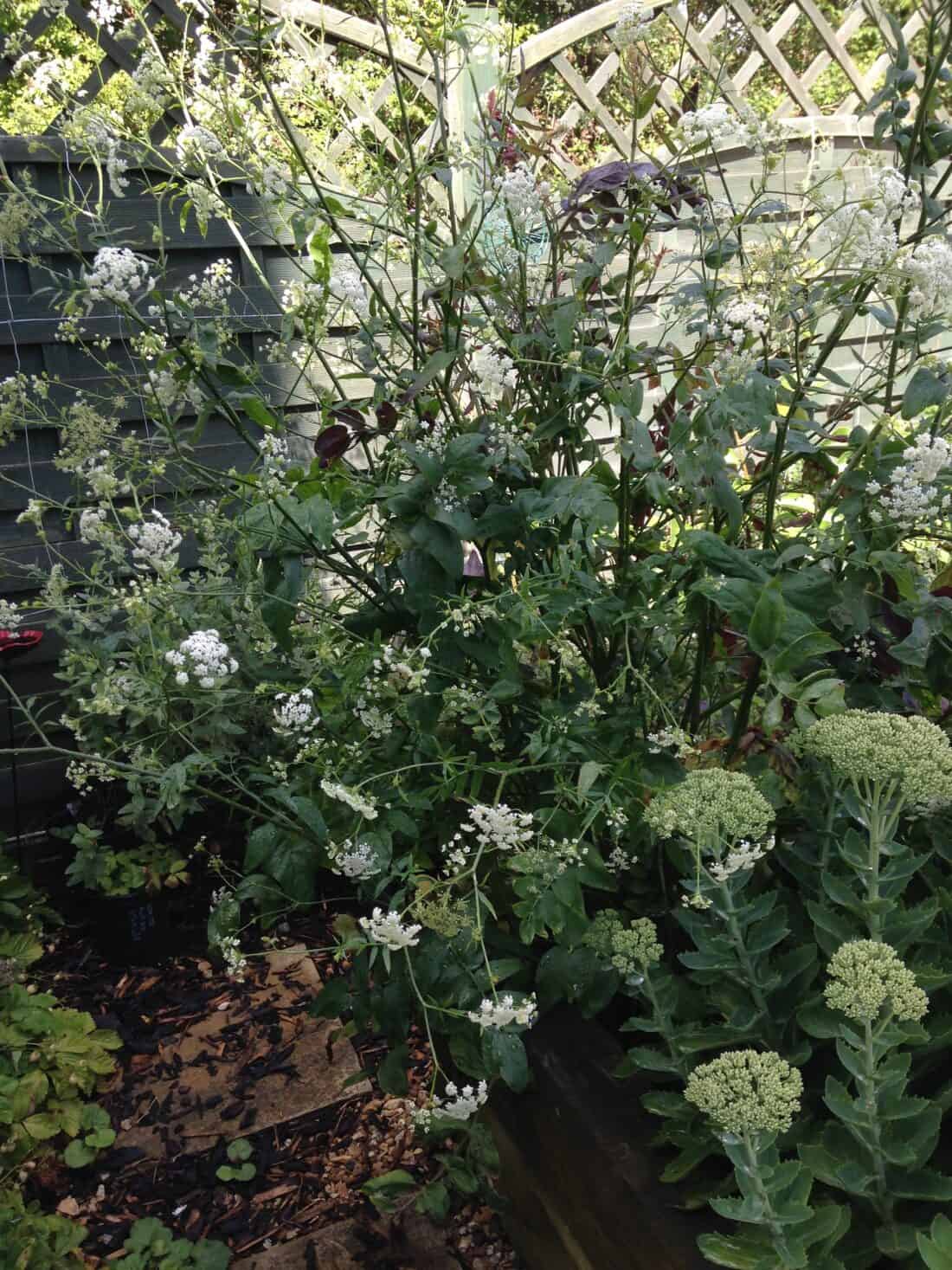
Plant Requirements for a Low-Maintenance Perennial Vegetable Garden:
- Perennial or reliably self-sowing but not rampant or aggressive.
- Tasty and culinarily interesting.
- Low maintenance (meaning no staking or fertilizing required and never needing special attention to keep it healthy in my climate).
- Mostly unbothered by deer, woodchucks, or other animals.
- All the better if it is beautiful.
A perennial food garden is a garden planted with perennial plants (most vegetables are annuals, requiring replanting every year) that come back year after year. These plants provide a sustainable source of food, requiring less maintenance and allowing for continuous growth of a diverse range of fruits, vegetables, and herbs.
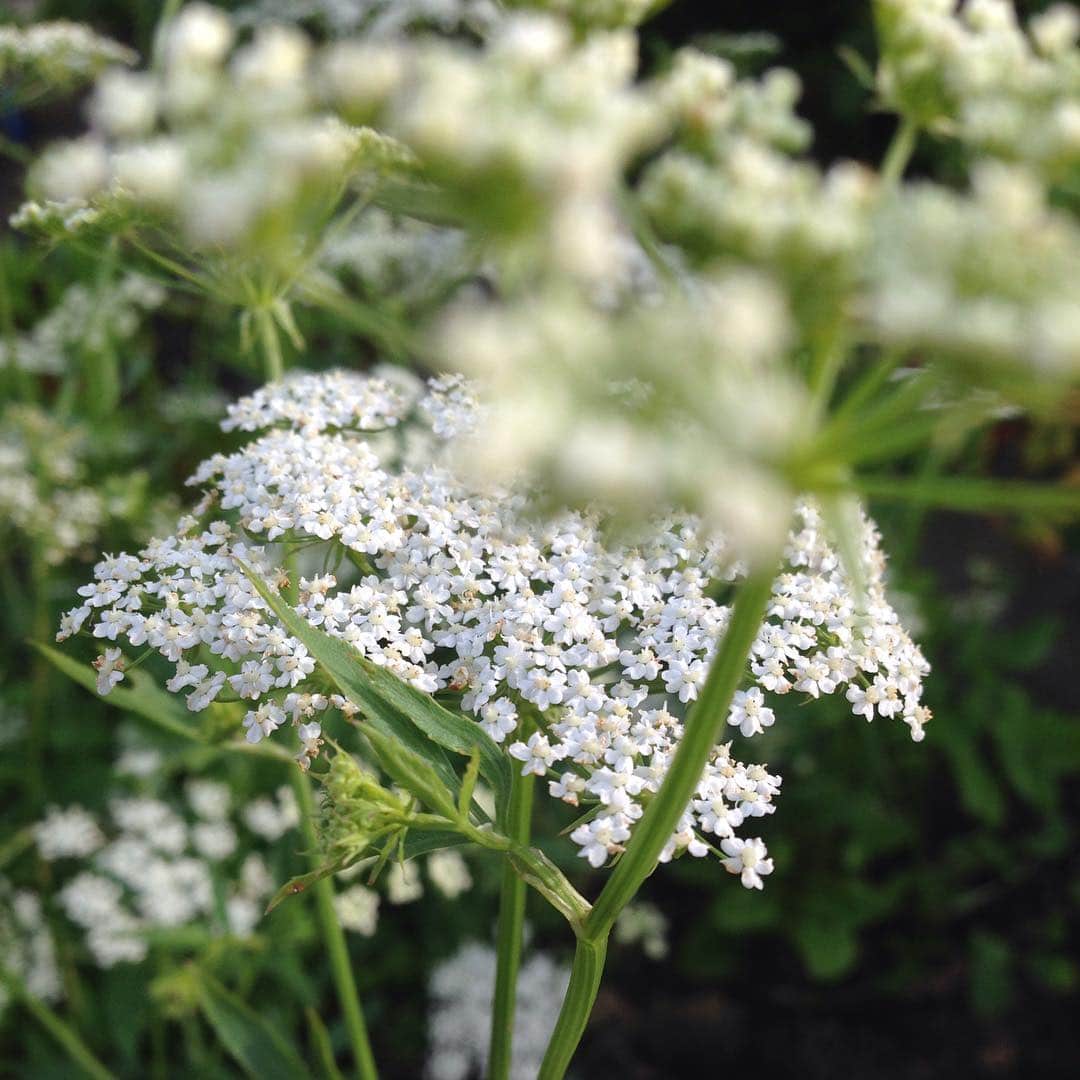
Skirret – Sium Sisarum
In looking around for plants to experiment with and fill in the garden, I just came across Skirret. Latin: Sium sisarum.
From Incredible Vegetable:
“Skirrets are a hardy perennial root vegetable with skinny parsnip type roots. Skirrets can be grown from seed or from purchasing a crown or root offset…which will give you a head start. One sowing is all you need and you can collect your own seed and divide up your own plants once established.”
– Incredible Vegetable:
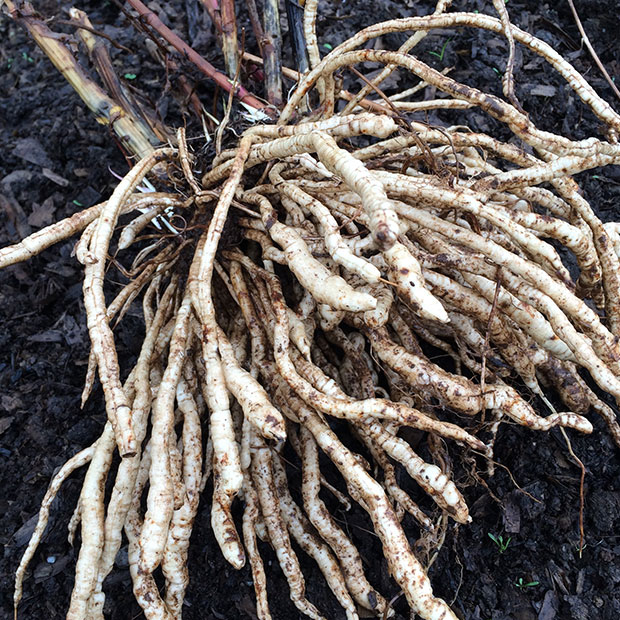
And then there is this from The Telegraph:
“Unfussy in most soils, resistant to disease and relishing frost, this sweet, white root’s downfall was progress. “It’s just not a commercial crop,” explains Marc Meltonville, food historian at Historic Royal Palaces. Relatively low-yield, fiddly to harvest and fiddlier to prepare, poor little skirret’s delightful but skinny roots were overtaken by bold, brash, industrial-scale potatoes and parsnips. Dainty and delicate, skirret’s loss to the commercial world is a gift to the home gardener.
Native to China, skirret arrived in Europe during classical times, probably brought to the British Isles by the Romans. It featured in monastic gardens, but became popular in medieval times and was used a lot in Tudor cookery.”
– The Telegraph
Plus the tops look a lot like dill or carrots with umbilifer heads that I love in a bouquet. I wonder what their vase life is like?
Have you grown it? Cooked with it? All I can find are recipes on Wikipedia from Tudor times – which is kind of cool (ok, really cool), but I’d love to find some modern-day inventions.
p.s.
I found this on instagram (by neladible)
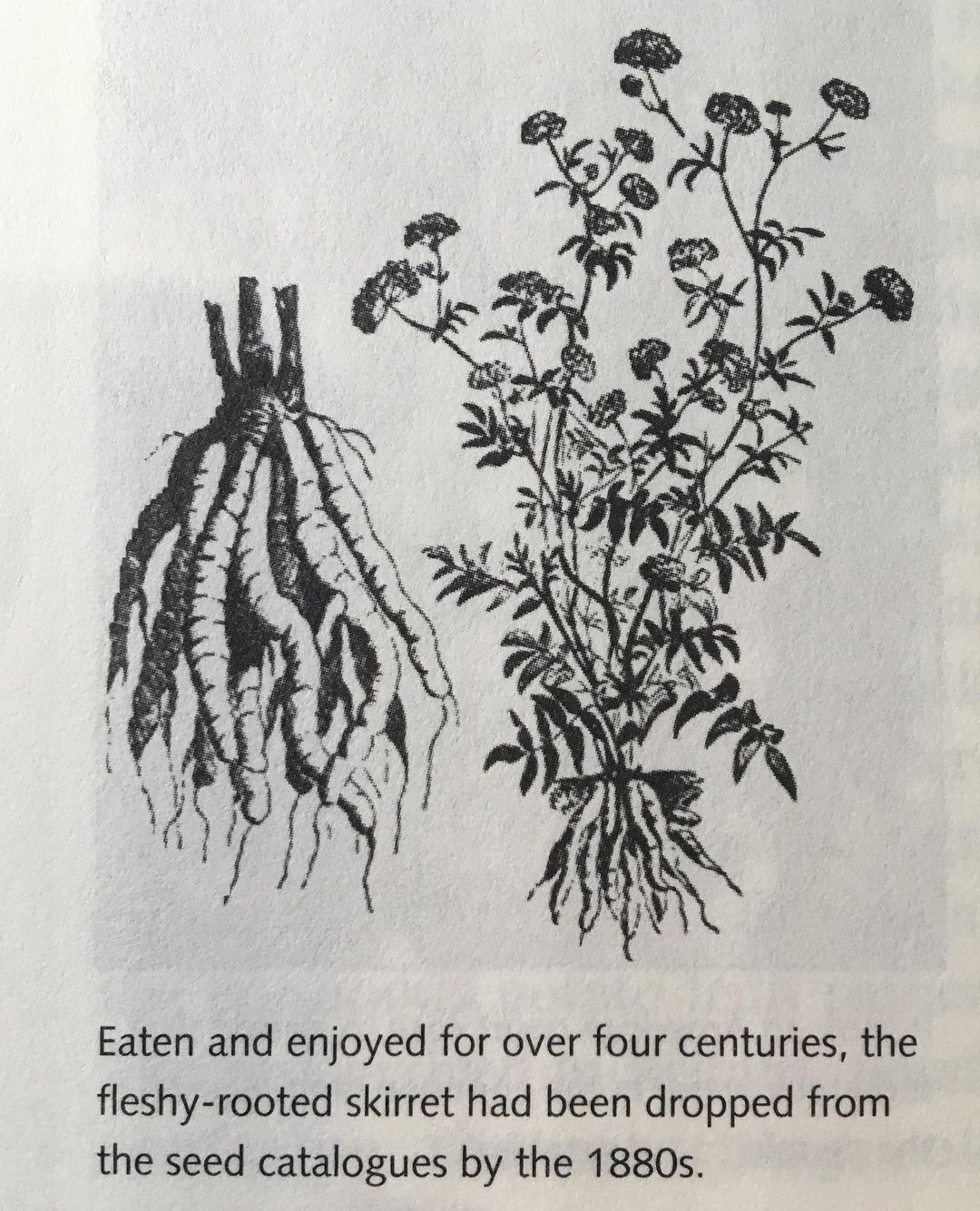
Where to Buy Skirret and Learn More:
See Wiki for Sium sisarum (Skirret).
Images from Mandy Barber at Incredible Vegetables (in UK – where seeds are available).
In the USA seeds, you may be able to purchase from Fedco.
Skirret seeds, also known as Sium sisarum seeds can be planted in well-drained soil and will produce edible tubers after several months of growth. Skirret seeds are a unique addition to any garden.
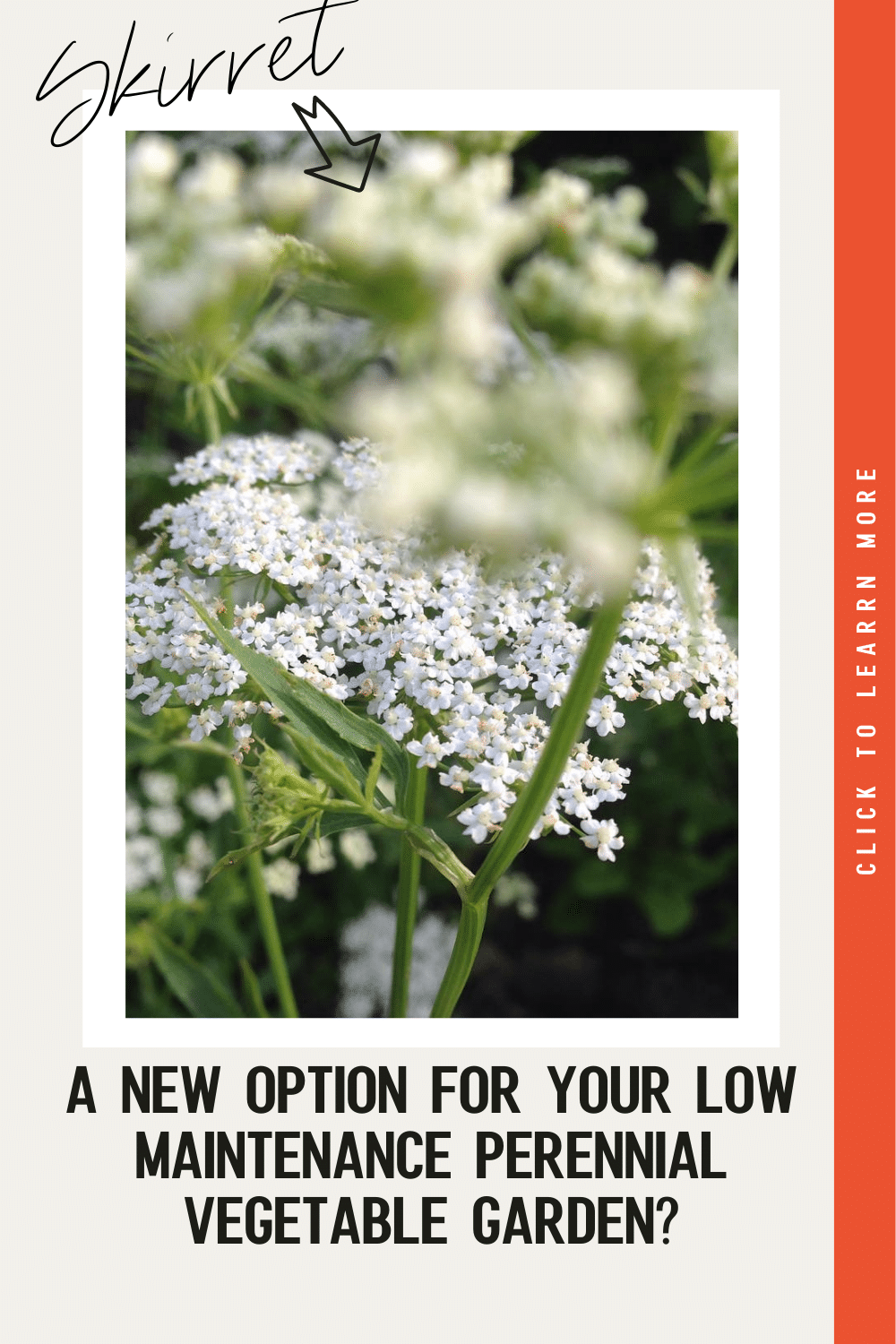
I wonder how this tastes. Most of the vegetables I grow are annuals (I do have quite a few perennial flowers, though). Growing more perennial vegetables would certainly save me a lot of time and energy with my garden each year.
You might like my skirret pasties http://backyardlarder.blogspot.co.uk/2016/01/skirret-pasties.html I’m more of a gardener than a cook but these were actually really satisfying 🙂 And here’s a link to farmgal’s Skirret, apple and cheese tart https://livingmydreamlifeonthefarm.com/2016/10/14/skirret-apple-cheese-tart-recipe/ And they are good anywhere you might usually use mashed potato as a topping.